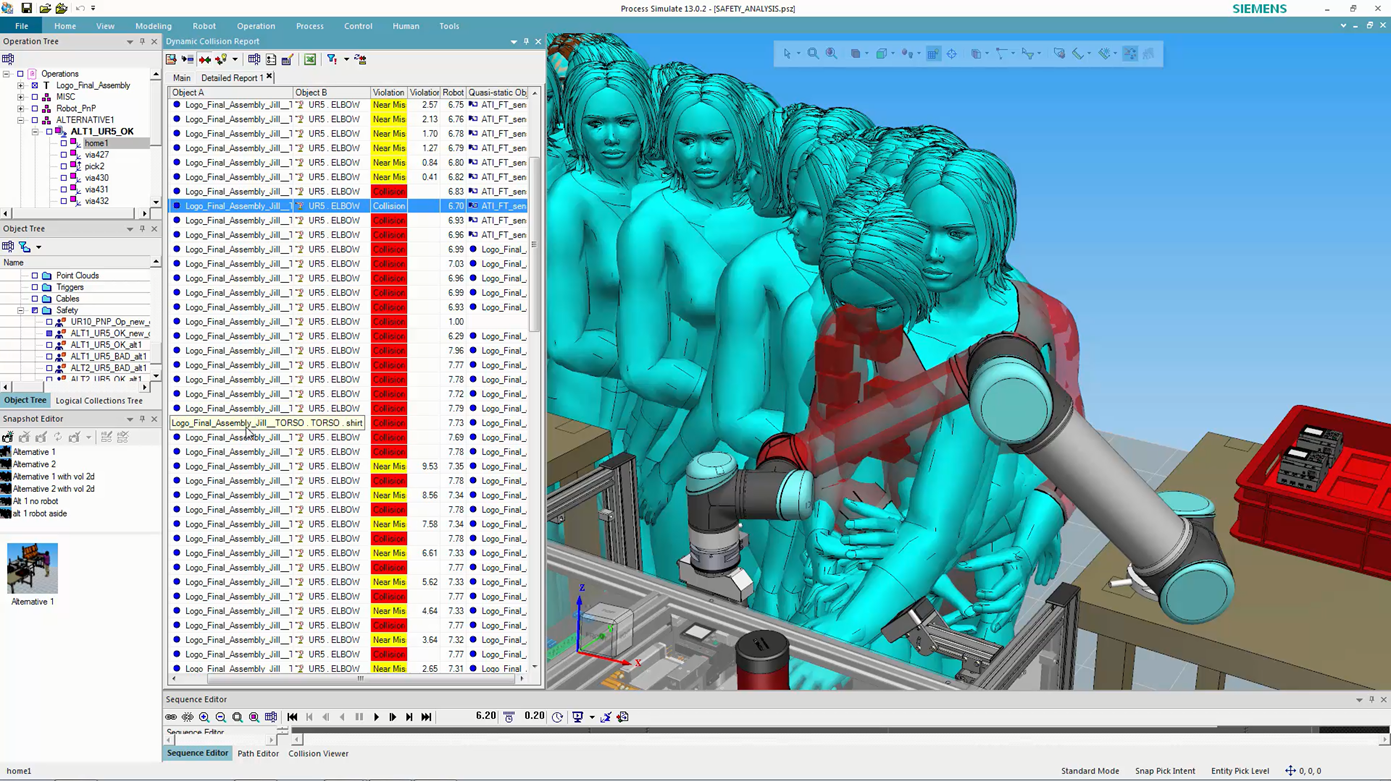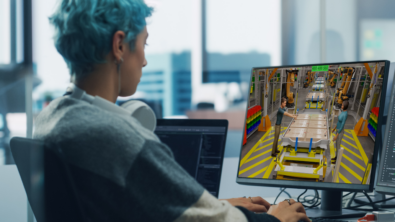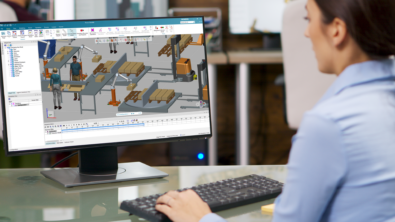Transforming to Advanced Robotics

This blog was written by Shay Shomroni, Manufacturing Engineering – Business Development, Siemens PLM.
In its “2016 Hype Cycle for Emerging Technology,” Gartner Inc. positions smart machines in general and smart robots in particular as the most disruptive class of technologies in the next 10 years[1]. A Smart robot, sometimes referred to as “advanced robot,” is an artificial intelligence (AI) system that can interact with its environment, take decisions independently, and perform its tasks based on changing conditions.
Boston Consulting Group (BCG) suggests that many industries are getting closer to seeing the economic value of replacing human labor with robots[2]. In some industries, they predict, robots will do 40 percent of manufacturing tasks. Several forces power the robot revolution: the cost of hardware and software are expected to drop over the next years, the performance of robots constantly improve, robots become easier to program and use, and advanced technology makes robots smarter, more connected, safer to human workers and more flexible for a wider range of use-cases. These technologies will enable even small manufacturers, with smaller batch sizes to adopt robotics and automation.
Experts predict that advanced robots will disrupt several applications. With sophisticated vision systems and force-sensors, robots will be able to replace human labor for simple, and in the future more advanced, assembly operations. Autonomous robots will replace transformation lines and linear conveyors with an adaptive “just-in-time” system. Service robots will serve as personal assistants to human workers helping them to increase performance and avoid injuries. Robots will also perform inspection and surveillance of production processes.
The robotics revolution will impose significant challenges on the manufacturing eco-system. The paradigm shift in manufacturing will require substantial reengineering toward task oriented manufacturing and addressing non-deterministic scenarios. Collaboration between human workers and robots will require adopting new process-based safety standards. Robot networking will require deployment of Industrial Internet of Things (IIOT) concepts[3]. Finally yet importantly, there will be an increasing demand for advanced manufacturing skilled personnel to operate and optimize the operations in the factory floor.
Various simulation software solutions can help manufacturers to cope with those challenges. To optimize a stochastic operation of several autonomous robots, manufacturers may use a discreet event simulation tool. To program a sensor-based smart robot, use an advanced 3D simulation and offline programming tool with AI capabilities. To assess human-robot collaboration safety areas, use a 3D safety simulation system. To optimize the control and automation of an advanced robotics environment, use a virtual commissioning tool. Finally, to analyze potential production issues use a virtual reality (VR) or augmented reality (AR) immersive simulation system. Be advised that it is important to select a set of tools that can integrate to your PLM system, so you could share data and information among your employees and collaborate with your suppliers.
If you have any questions or comments, please use the COMMENT section below.
[1] http://www.gartner.com/newsroom/id/3412017
[2] https://www.bcgperspectives.com/content/articles/lean-manufacturing-innovation-robotics-revolution-next-great-leap-manufacturing/
[3] http://blog.robotiq.com/the-internet-of-things-why-robotics-is-ahead-with-2016s-top-trend
 Virtual Reality for advanced robotics
Virtual Reality for advanced robotics
 Human-robot risk assessment application
Human-robot risk assessment application

